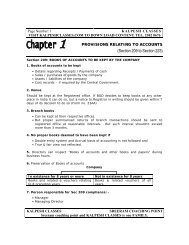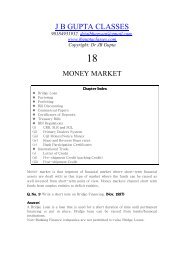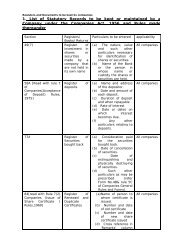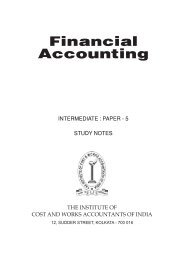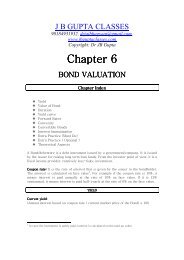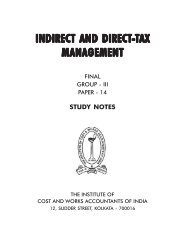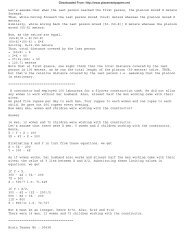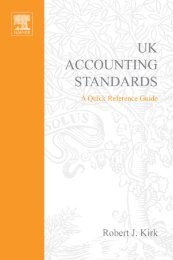Valuation for Financial Reporting - CMA Ankur Pandey
Valuation for Financial Reporting - CMA Ankur Pandey
Valuation for Financial Reporting - CMA Ankur Pandey
- No tags were found...
You also want an ePaper? Increase the reach of your titles
YUMPU automatically turns print PDFs into web optimized ePapers that Google loves.
12 <strong>Valuation</strong> <strong>for</strong> <strong>Financial</strong> <strong>Reporting</strong>An active market <strong>for</strong> the asset or liability is a market in which transactions <strong>for</strong> the assetor liability occur with sufficient frequency and volume to provide pricing in<strong>for</strong>mationon an ongoing basis. 22As stated previously, Level 1 inputs are observable market inputs that reflectquoted prices <strong>for</strong> identical assets or liabilities in active markets. 23 In explaining itsreasoning <strong>for</strong> referencing quoted market prices, the FASB cited paragraph 57 of SFASNo. 107: 24The Board concluded that quoted market prices provide the most reliable measure offair value. Quoted market prices are easy to obtain and are reliable and verifiable. Theyare used and relied upon regularly and are well understood by investors, creditors, andother users of financial in<strong>for</strong>mation. In recent years, new markets have developed andsome existing markets have evolved from thin to active markets, thereby increasing theready availability of reliable fair value in<strong>for</strong>mation (emphasis added).Further, the FASB affirmed:...that its intent was not to preclude adjustments to a quoted price if that price is notreadily available or representative of fair value, noting that in those situations, themarket <strong>for</strong> the particular asset or liability might not be active. To convey its intent moreclearly, the Board clarified that in those situations, the fair value of the asset or liabilityshould be measured using the quoted price, as adjusted, but within a lower level of thefair value hierarchy (emphasis added). 25While it is clear that the FASB recognizes the distinction between a thin and anactive market, it chose not to provide a clear definition of active market. While theliterature fails to provide a specific definition or objective measures <strong>for</strong> determiningwhether a market is an active market, it would seem an active market would take intoconsideration the following:1. Narrow range <strong>for</strong> bid/ask prices2. Homogeneous asset3. Significant trading volume4. Liquid (obvious, but needs to be said)5. Observable (again, obvious)6. Level of activity. A mathematically related definition would speak to bid/askspreads, volume of activity compared to total float or shares outstanding; that is,an active market could handle a certain volume with a limited impact on pricegiven a limited time frame.Whether a market is sufficiently active to satisfy the derivation of price deemed‘‘quoted price’’ will be a matter of judgment and will likely vary from reporting unit toreporting unit.SUBSEQUENT EVENTSIn an ef<strong>for</strong>t to obtain the most relevant price available, even if it is after the measurementdate, the FASB is allowing subsequent events to determine such price. 26



